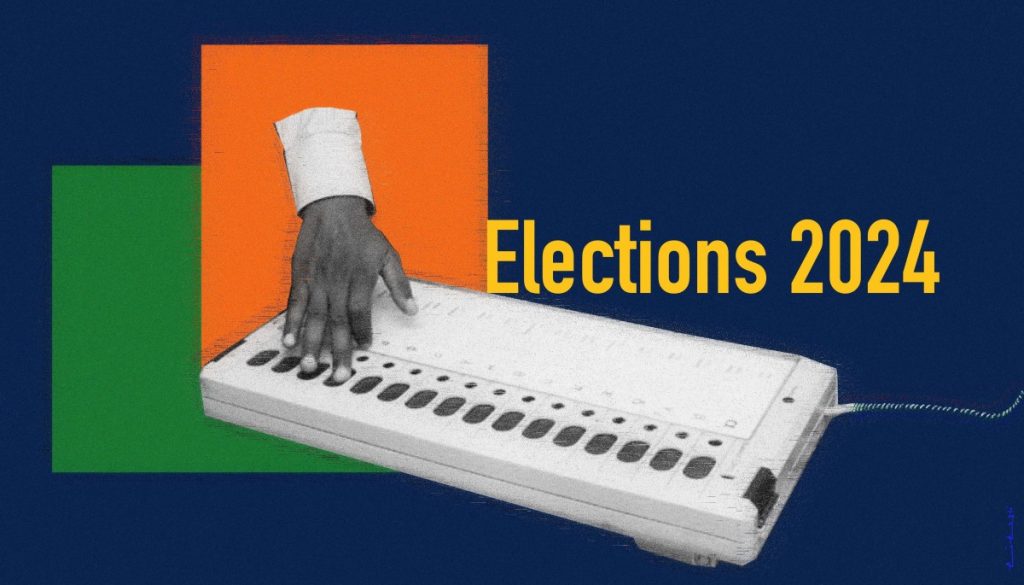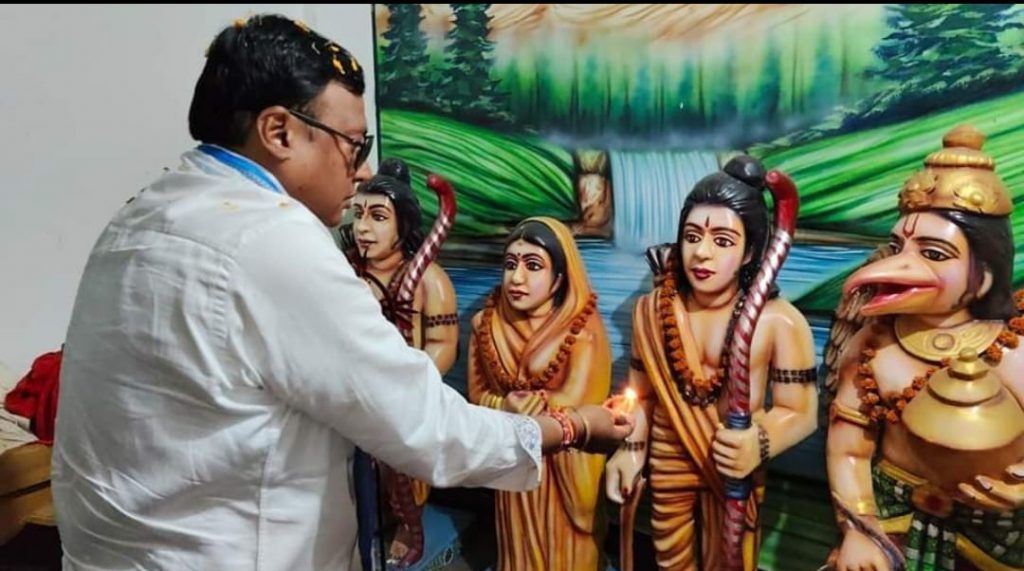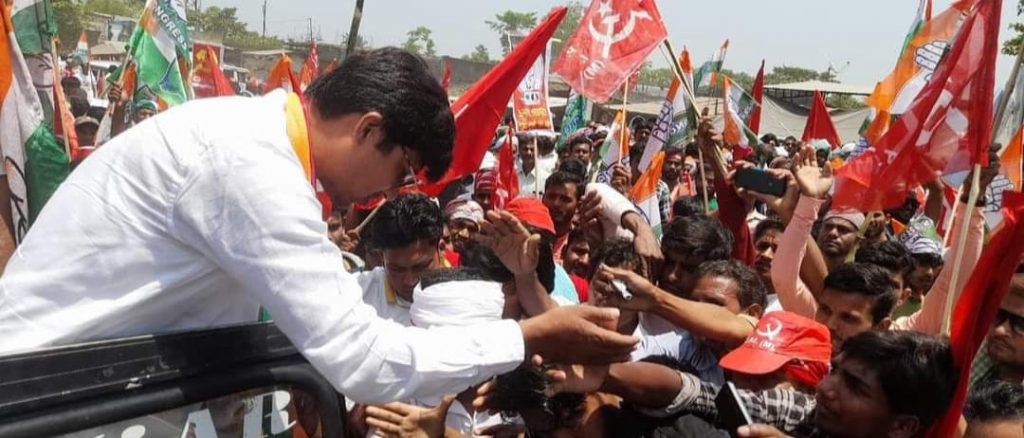Slippery Loyalty, Missing Leaders and the RSS: Why Raiganj Is a Seat to Watch in Bengal
Raiganj (Bengal): The sitting Bharatiya Janata Party MLA has joined the Trinamool Congress and is now a candidate.
The former TMC municipality chairman is now running for the BJP.
The former Forward Bloc MLA is contesting on a Congress ticket.
These shifts in political loyalty among all three candidates make Bengal's Raiganj Lok Sabha constituency one to watch these polls.
Raiganj shares a lengthy border with Bangladesh and Bihar and has historically eluded the TMC's grasp despite being one of its targets. A Congress stronghold until 1991, the seat was held by the Communist Party of India (Marxist) for a decade under Subrata Mukherjee till Congress regained control once again. Former Union minister, the late Priya Ranjan Dasmunsi, was the MP from 1999 to 2009, and was succeeded by his wife, Deepa Dasmunsi. In 2014, the CPI(M)’s Mohammed Salim won it again. Finally, in 2019, the BJP claimed victory, with Debashree Chaudhuri becoming Raiganj MP.

Illustration: Pariplab Chakraborty
Chaudhuri, who was the Union Minister of State for Child and Women Welfare, is now contesting from South Kolkata. The unexpected shift has more to do with internal dissent within her own party. On January 31, a significant faction from North Dinajpur district protested against her renomination by marching through the streets of Raiganj.
“Our MP has harmed BJP in the area. There has hardly been any development. She was mostly unreachable. There was also massive irregularities during Panchayat election ticket distribution. Due to her misbehaviour, our MLA Krishna Kalyani switched sides to TMC,” said local BJP leader Veena Jha.
TMC candidate Krishna Kalyani said Chaudhuri has been "missing for the last five years."
Kalyani switched to the BJP from TMC before the 2021 assembly election and then rejoined Bengal's ruling party a few months after winning the seat. According to the assembly records, though, he remained a BJP MLA till his resignation last month – following his nomination – and was made the chairman of the public accounts committee (PAC) of the assembly, thanks to his status as an "opposition MLA."

Kalyani. Photo: By arrangement.
Kalyani gained attention for his contributions to the Ram temple in Ayodhya and for allowing Matua people who belong to the Scheduled Castes list to wash his feet during his 2023 Panchayat election campaign. His said that his confidence stems from TMC’s impressive performance in the 2021 assembly election and 2023 Panchayat polls.
“I am a religious person, so I have donated to the Ram temple. I left BJP a couple of years ago. Mark my words, I am 100% winning Raiganj,” declared a confident Kalyani. “People from the minority community consider Didi (chief minister Mamata Banerjee) their saviour. The National Register of Citizens, too, is a major issue here.”
Also read: A Comparison of Congress and BJP Manifestoes And What They Fail to Mention
Comprising approximately 49% of the total electorate, Muslims constitute the largest voting bloc in the constituency. In the 2019 and 2021 elections, a significant portion of them voted for TMC, following the NRC-related polarisation. However, the path to victory for the ruling party appears to be more challenging than anticipated. Kalyani's close ties with the Rashtriya Swayamsevak Sangh have become a focal point in Congress candidate Ali Imran Ramz's campaign. Popularly known as Victor, he has been focusing on the alleged ‘setting’ – a word commonly used to mean a secret understanding – between TMC and BJP, highlighting the RSS's close links to both parties.
“Both TMC and BJP are trying to create polarisation. We advocate for a unified vote against this divisive agenda. We believe our party will reap the benefits of countering this conspiracy,” said 46-year-old Imran, who hails from a political family and was elected to the assembly thrice.

Imran. Photo: By arrangement.
The 2019 Lok Sabha election was a four-way contest between BJP, TMC, CPI(M) and Congress. This time, CPI(M) and Congress are in an alliance in the state.
"In the previous Lok Sabha election, there was a whisper campaign to oppose the Left candidate backed by the BJP, alleging that he was an atheist. This division of votes helped BJP to win," remarked Arman Sekh, a businessman from the Hemtabad area.
BJP has activated its minority cell to reach out to a section of the Muslim population. Mafuja Khatun, a member of the BJP's Central Executive Committee, said, “Minorities are realising that the BJP does not oppose them. They are benefiting directly from various central schemes, leading to increased support for the party within the Muslim community.”
Also read: Modi’s Islamophobic Speech Shows Despite Tall Claims, BJP Is Jittery About 2024
Uttar Dinajpur, renowned for its production of fragrant rice, has recently seen a sharp rise in migrant worker numbers. The closure of the cotton mill, once the sole industry in the area, has added to the economic challenges. Despite these challenges, the BJP depends on the backing of the Sangh to navigate through various complexities, leveraging their educational institutions as a key platform for continuous public engagement.
“During the Left era, we faced opposition, and we had to resort to legal action for approval. However, the situation has changed now. The Trinamool government is supporting all Sangh-affiliated schools, eliminating approval hurdles,” said Vidya Bharati's North Bengal Region secretary, Parimal Roy Kongar.
The declining state of government schools in the state, coupled with numerous scandals within the education department, has resulted in a decrease in student enrolment in these institutions. As a result, the middle class is increasingly turning to privately-run English medium schools. Meanwhile, Sangh-affiliated schools have gained popularity among the lower middle class and economically disadvantaged communities in North Bengal, offering English medium education for their children. Sources indicate that over 180 lower-level schools are operating in the Raiganj sub-division, indirectly controlled by the Sangh under various names.
Veteran Congress leader Mohit Sengupta, said, “These are religious educational institutions directly operated by the Sangh. While their syllabus differs, there are questions about their educational approach. However, they've successfully attracted students due to the dismal state of government schools.”
Raiganj constituency will go to polls on April 26 in the second phase.
Translated from the Bengali original by and with inputs from Aparna Bhattacharya.
This article went live on April twenty-fifth, two thousand twenty four, at zero minutes past four in the afternoon.The Wire is now on WhatsApp. Follow our channel for sharp analysis and opinions on the latest developments.




